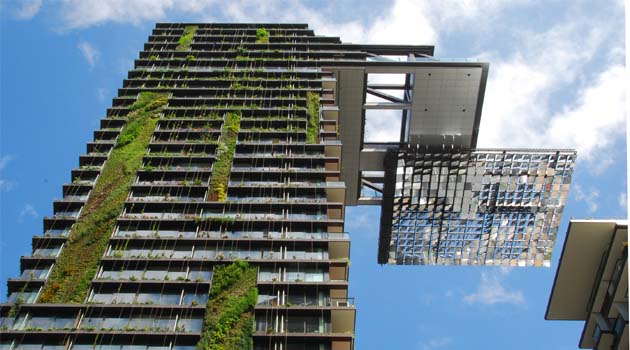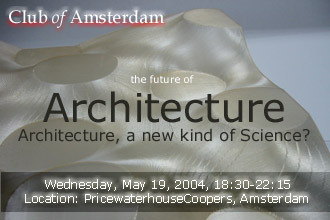
By Patrick Crehan, Director, Club of Amsterdam, CEO, Crehan, Kusano & Associates sprl
March 2008
Thoughts about the event about the future of Ecological Architecture
1) The term ‘ecological architecture’ is not well defined it refers to something that lies beyond green or sustainable architecture. It demands more in terms of environmental and human performance.
2) Existing standards for sustainable/green/ecological/good architecture are inadequate. They set the bar too low in terms of performance. They are ineffective in that they attenuate the aspirations of building owners when commissioning. Owners who want to achieve a certain rating or certification with respect to a recognized standard, feel no need to go beyond the highest rating, even if this could be done at little extra cost.
3) The building is one of the basic units for architecture. The challenge of ‘ecological architecture’ exists at many levels – building, urban environment, city, country or planet. Question: Do standards exist at these different levels? How do they interact?
4) Though technical, the issue of measurement is important for the reason that you cannot manage, compare or improve what you cannot measure. Question: What are the dimensions of performance for ‘ecological’ architecture’? … at the level of the day-to-day running and maintenance of the system? … over the life-cycle of a ‘project’? … at different scales?
5) High performance architecture (at building level anyway) does not have to be expensive. It is possible to build ‘zero-energy’ or ‘autonomous’ buildings at no extra cost. The cost structure will be different from conventional approaches in that some items cost more but are off-set by savings elsewhere.
6) To have a real impact there is a need to educate people and help them make appropriate changes to the way they live.
7) The real issue for large scale adoption under current conditions is the retro-fitting of existing buildings. Making high-performance buildings from green-field sites is relatively easy. Question: Is there a role here for standards to be required of landlords or of government in public procurement?
8) One of the challenges of adopting ecological architecture is resistance to the substitution of consumables. The ‘radiator’ is an old consumable, often not the best solution to a problem, but other solutions are possible such as in-floor systems for heating and cooling. This has been possible for many years, but take-up has been low. Another example is in the design of sun-screens. Those that roll from the bottom to the top are much more efficient than those that go from the top to the bottom, but they are generally not employed.
9) Governments have no incentive to reduce the energy cost of buildings. Energy is taxable and ecological architecture ultimately means the loss of a source of revenue. The enemy is not ‘government’ in that governments need taxes to run society. But they need to recognize an alternative. The same force is at work in the case of alcohol and tobacco. Question: What would happen if overnight all taxes of energy, alcohol and tobacco disappeared? What would this mean in terms of loss of revenues for taxation to pay for healthcare, social security, school and hospitals? What could be done to replace these revenues in an ageing post-petroleum society? What would such a society look like and where would it generate the taxes to cover its own cost of social infrastructure. Maybe the real revolution is not in building standards, but in a whole new vision for organizing society that includes a new model for taxation?





Customer Reviews
Thanks for submitting your comment!